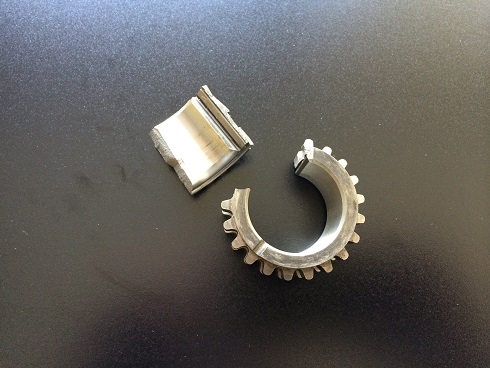Balancer, OPG, Timing Sprocket Gear Combo (11-18 Mustang GT)
Ultimate Combo using only the best components at the best prices. Great for forced induction, N/A, nitrous applications or any modified motors that see high rpm use. These proven parts are much stronger than the oem components and must be used in any serious engine build. Don't wait till they break, trust us!!
Application: Ford 2011-2017 Mustang GT
The weakest link for any performance build is the OPG, Crank Sprocket Gears and the harmonic balancer. We highly suggest you change these components before adding superchargers, turbochargers, nitrous systems or heads/cams packages.
As power levels and rpm increase, so do the harmonics of the crankshaft. As these harmonic levels increased, ultimately the powdered metal oil pump gears proved too brittle to survive the abuse.
As mentioned, most of the failures were found in supercharged applications that utilized inexpensive balancers.
Canceling harmonics is important, so in addition to the upgraded billet oil pump gears, a quality crank damper is also recommended. Increased crankshaft harmonics aren’t the only problem. Some supercharged applications add so much load on the snout of the crank that it actually causes the crank to move just enough that the oil pump gears can bind, only worsening the problem.
Oil pump failures aren’t new to the Mustang
If you plan on significantly raising the rev ceiling or increasing the power on your Coyote, especially with a supercharger, then billet oil pump gears are more than just cheap insurance. They’re a must.
Oil pump gear problems aren’t necessarily new to the Mustang world. High-horsepower, high-revving 3V and 4V modular motors also experienced similar problems, but generally to a lesser extent in normally aspirated form because of their lower rev ceilings. Simply put, lightly modified modulars ran out of breath before the oil pump gears became a problem. But failures on supercharged modulars weren’t uncommon, as their higher power levels and increased load on the crank worsened oil pump-killing harmonics (more on that later).
But modulars aside, the Coyote quickly earned a reputation for oil pump problems because unlike its predecessors, the Coyote had the capability of making enough power and spinning high enough rpm that problems with the oil pump gears arose.
The Coyotes spin a lot more rpm than the modulars, and big power levels are easily reached, so oil pump problems were more prevalent.
The problem and the fix
As gearheads pushed the envelope with the Coyote both in rpm and power, it was only a matter of time before stock parts began to fail. As luck would have it, the stock oil pump gears were some of the first OEM parts to bite the dust.
Back in 2011 we began seeing problems with the stock powdered metal oil pump gears shattering, especially on supercharged applications that utilized an inexpensive, aftermarket crank damper.
The inner oil pump gear is lugged off the crankshaft, which means the crankshaft harmonics are passed through oil pump gears and into the balancer.
As one might guess, as power levels and rpm increase, so do the harmonics of the crankshaft. As these harmonic levels increased, ultimately the powdered metal oil pump gears proved too brittle to survive the abuse.
As mentioned, most of the failures were found in supercharged applications that utilized inexpensive balancers.
Canceling harmonics is important, so in addition to the upgraded billet oil pump gears, a quality crank damper is also recommended. Increased crankshaft harmonics aren’t the only problem. Some supercharged applications add so much load on the snout of the crank that it actually causes the crank to move just enough that the oil pump gears can bind, only worsening the problem.
Example of Coyote Timing Sprocket Failure
Fitment: 2011, 2012, 2013, 2014, 2015, 2016, 2017









